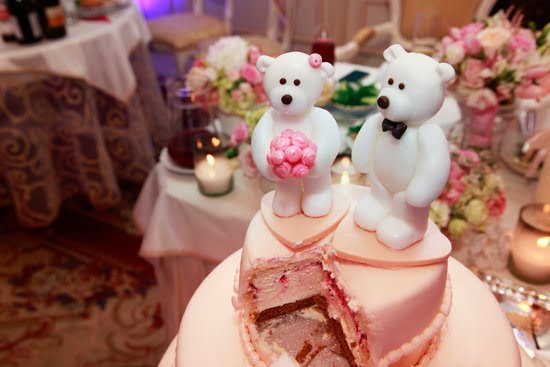Cake decorating is a skill that requires not only artistic talent but also precision and attention to detail. Whether you’re a professional cake decorator or someone considering entering the field, understanding the average hourly rate for cake decorators is crucial. This information allows you to set reasonable expectations for your earnings, negotiate fair compensation, and make strategic career decisions.
The average hourly rate for cake decorators can vary depending on several factors. In this article, we will explore the key variables that affect this rate and understand why it’s essential to have knowledge about it. By examining statistical data and delving into regional variations, we can gain a comprehensive understanding of what determines both the low and high end of the average hourly rate.
Not only does location play a role in determining the average hourly rate, but so does professional background and expertise. Experienced decorators with formal education may command higher rates compared to those with less experience or training. Specialization in specific cake decorating skills can also impact earning potential.
Overall, knowing the average hourly rate for cake decorators provides valuable insights into the industry’s standards and trends. It empowers professionals to negotiate fair wages, plan their career paths strategically, and ensure they are compensated adequately for their skills and expertise. In the following sections of this article, we will delve deeper into these factors affecting the average hourly rate for cake decorators and explore ways in which cake decorators can maximize their earnings through negotiation strategies.
Factors Affecting the Average Hourly Rate
Market Demand
One of the key factors affecting the average hourly rate for cake decorators is the level of market demand. When there is a high demand for cake decorating services, decorators often have more bargaining power and can command higher rates.
This typically occurs during peak seasons such as wedding and holiday seasons when there is an increased need for elaborate cake designs. On the other hand, during slower periods, when demand may decrease, decorators may need to lower their rates to attract clients and maintain a steady flow of work.
Level of Experience
Another significant variable that affects the average hourly rate for cake decorators is their level of experience. As with many professions, in the cake decorating industry, experience is highly valued by clients.
Cake decorators who have been in the industry for a longer time and have built a strong portfolio of successful projects often command higher rates due to their expertise and reputation. On the other hand, novice or less experienced decorators may need to offer their services at lower rates initially to gain valuable hands-on experience and build a solid client base.
Type of Clientele
The type of clientele that a cake decorator caters to can also impact their average hourly rate. Cake decorators who primarily serve high-end customers or luxury venues are likely to charge more compared to those catering to individuals on tighter budgets or smaller events.
The expectations and demands of higher-end clientele often involve more intricate and time-consuming designs, thus justifying higher rates. However, even decorators working with budget-conscious clients can still thrive by offering tailored options that suit their clients’ needs while still providing quality designs within affordable price ranges.
Understanding these key variables that affect the average hourly rate for cake decorators is crucial when negotiating contracts or determining pricing strategies. By considering market demand levels, one’s level of experience, and the type of clientele they cater to, cake decorators can make informed decisions about setting competitive rates that align with their skills, knowledge, and target market.
Understanding the Range
When it comes to determining the average hourly rate for cake decorators, there are several factors that contribute to the range of rates seen within the industry. Understanding these factors is crucial for both employers and cake decorators as it helps determine fair compensation and allows decorators to maximize their earning potential. In this section, we will explore the key variables that influence the low and high end of the average hourly rate for cake decorators.
The Complexity of Design
One factor that plays a significant role in determining the range of hourly rates is the complexity of design requested by clients. Cake decorators who can create intricate designs with detailed decorations and elaborate fondant work often command higher rates due to their advanced skills and expertise.
On the other hand, decorators who primarily focus on simpler designs or basic buttercream techniques may have lower hourly rates. The complexity of design not only requires more time and effort but also showcases a higher level of craftsmanship, which influences how much decorators can charge per hour.
Market Demand
Another important consideration when determining the low and high end of the average hourly rate is market demand. Areas with a higher demand for custom cakes or specialty designs tend to have higher hourly rates as decorators can capitalize on this demand.
Conversely, areas with lower demand may result in lower rates as competition among decorators increases. Additionally, market demand can also be influenced by seasonal trends such as wedding seasons or holidays, which may see an increase in demand for cake decorating services.
Cost of Living
The cost of living in a particular region or city also has an impact on the range of hourly rates for cake decorators. Higher-cost areas generally have higher wages to accommodate for increased expenses such as rent, utilities, and transportation costs. As a result, cake decorators working in these areas may need to charge more per hour in order to maintain a reasonable standard of living.
Conversely, cake decorators in regions with a lower cost of living may have lower hourly rates since their expenses are relatively lower. It is essential for decorators to consider the implications of the cost of living when setting their hourly rates and negotiating with clients.
By understanding the factors that determine the low and high end of the average hourly rate for cake decorators, both employers and decorators themselves can make informed decisions about fair compensation. From the complexity of design to market demand and the cost of living, these variables play a crucial role in determining how much a decorator can earn per hour.
By considering these factors, decorators can better assess their skills, negotiate more effectively, and maximize their earning potential within the industry.
National Average Hourly Rate
The national average hourly rate for cake decorators is an important factor to consider when determining fair compensation for these professionals. By diving into statistics and data related to the average hourly rate, one can gain valuable insights into industry norms and trends.
One way to analyze the national average hourly rate for cake decorators is by examining data from various sources such as industry surveys, job boards, and government reports. These sources collect information on wages and salaries across different regions and industries, providing a comprehensive view of the average hourly rate.
According to recent data, the national average hourly rate for cake decorators falls within a certain range. For example, in 2021, the average hourly rate for cake decorators in the United States was $17.50 per hour. However, it is important to note that this figure can vary depending on factors such as location, experience level, specialization, and education.
To better understand the national average hourly rate for cake decorators, it can be helpful to break down the data by different variables. For instance:
- Location: The cost of living and demand for cake decorators can vary greatly from one region or state to another. This can lead to significant differences in the average hourly rate.
- Experience Level: Cake decorators with more experience generally command higher rates due to their expertise and skill set.
- Education: Advanced degrees or certifications in cake decorating can also impact the average hourly rate.
- Specialization: Those with specialized skills like custom fondant work or sugar flower arrangements may be able to charge higher rates based on their unique expertise.
By considering these factors, aspiring cake decorators can get a better understanding of how their salary expectations align with industry averages at a national level. This knowledge serves as a valuable tool during negotiations with employers or clients and helps shape realistic career goals within the field of cake decorating.
Regional Variations
Location is a crucial factor that affects the average hourly rate for cake decorators. Different regions may have varying costs of living, demand for cake decorators, and competition in the industry, all of which can impact the rates charged by professionals. Understanding these regional variations can help cake decorators effectively price their services and ensure they are competitive in their local market.
One key consideration when analyzing regional variations is the cost of living in different areas. Urban centers or popular tourist destinations often have a higher cost of living, which means that the average hourly rate for cake decorators might be higher as well. This is because professionals need to account for the increased expenses associated with operating a business in these areas.
Another important aspect to consider is the level of demand for cake decorators in a specific region. Areas with a higher demand generally provide more opportunities for work and may result in higher average hourly rates. For example, densely populated cities or regions known for hosting events and celebrations can have greater demand for cake decorators, allowing them to charge premium rates.
Furthermore, competition among cake decorators within a particular region can also influence the average hourly rate. In areas where there are fewer cake decorators available or where they possess unique skills or specialties, they may be able to command higher rates due to limited competition. Conversely, regions saturated with cake decorators may see lower average hourly rates due to increased competition.
To summarize:
- The cost of living in an area impacts the average hourly rate as professionals adjust their rates based on expenses.
- Regions with high demand for cake decorators may result in higher average hourly rates due to more opportunities.
- Competition among cake decorators within a region can affect average rates – fewer competitors may lead to higher rates while increased competition can lower prices.
Cake decorators should thoroughly research their local market to determine how location factors into pricing strategies. By understanding regional variations and taking them into account, professionals can set competitive rates that reflect their skills, experience, and the local market conditions.
Experience and Education
Professional backgrounds and experience play a significant role in determining the average hourly rate for cake decorators. In this section, we will explore how different levels of experience and education impact the earning potential of cake decorators.
One key factor affecting the average hourly rate is the number of years of experience in the industry. Cake decorators who have been working in the field for several years tend to command higher rates compared to those who are just starting out. This is because experienced cake decorators have developed a wide range of skills, techniques, and a strong portfolio, making them more valuable to clients.
In addition to experience, education also plays a crucial role in shaping the average hourly rate. Formal education and training in baking and pastry arts can give cake decorators an edge in terms of knowledge and skills. Those with degrees or certifications from reputable culinary schools or institutions may be able to charge higher rates as their qualifications demonstrate their expertise and commitment to their craft.
| Years of Experience | Average Hourly Rate |
|---|---|
| Less than 1 year | $12 – $15 |
| 1-3 years | $15 – $20 |
| 3-5 years | $20 – $25 |
| 5+ years | $25 – $30+ |
This table shows a general range of average hourly rates based on experience level. It should be noted that these figures can vary depending on factors such as location, specialization, and demand for cake decorators in a particular area.
Specialization and Expertise
Cake decorating is a skill that requires creativity, precision, and attention to detail. However, not all cake decorators possess the same level of expertise or specialize in the same areas of cake design. This section will explore how different cake decorating skills can impact the average hourly rate for cake decorators.
One key factor that influences the average hourly rate for cake decorators is their level of specialization. Cake decorators who have mastered certain techniques or styles that are in high demand often command higher rates compared to those with more general skills. For example, a decorator who specializes in sculpted cakes or intricate sugar flower arrangements may be able to charge a premium due to the complexity of their work and the time and effort required.
Another aspect that affects the average hourly rate is the level of expertise a cake decorator possesses. Experience plays a crucial role in this regard, as seasoned decorators who have honed their craft over many years are likely to charge more than those who are just starting out. Additionally, decorators with a track record of successful projects and satisfied clients may be able to justify higher rates based on their reputation and portfolio.
| Specialization/Expertise | Average Hourly Rate |
|---|---|
| General Cake Decorating Skills | $15 – $20 |
| Sculpted Cakes | $25 – $40 |
| Sugar Flower Arrangements | $30 – $45 |
| Wedding Cakes | $35 – $50 |
| Decorative Fondant Work | $25 – $35 |
It is important to note that these average hourly rates can vary depending on other factors such as location and demand. Additionally, cake decorators may choose to set their rates based on their own assessment of their skills and the market they are catering to. Nonetheless, understanding the impact of specialization and expertise on the average hourly rate for cake decorators is essential in determining fair pricing and creating opportunities for career growth within the industry.
Unionization and Certification
Unionization and certification play a significant role in determining the average hourly rate for cake decorators. These industry standards not only have an impact on individual cake decorators’ earnings but also contribute to establishing fair wages across the industry.
Unionization provides cake decorators with collective bargaining power, allowing them to negotiate for better wages and working conditions. By joining together in a union, cake decorators can advocate for fair compensation and benefits that reflect their skills and contributions. Unionized workers often benefit from higher hourly rates, as well as other protections such as healthcare coverage and retirement plans.
In addition to unionization, certification is another important factor influencing the average hourly rate for cake decorators. Certification programs provide recognition of a decorator’s expertise and skill level, which can lead to increased earning potential. Clients are more likely to hire certified cake decorators, knowing that they have undergone rigorous training and demonstrated their proficiency in the field. This demand for certified professionals can drive up their hourly rates, reflecting their specialized knowledge and abilities.
While unionization and certification can positively influence the average hourly rate for cake decorators, it is important to note that not all decorators are represented by unions or possess certifications. However, those who do may have a competitive advantage in terms of securing higher-paying jobs or commanding higher rates due to their professional qualifications.
Cake decorators interested in maximizing their earnings should consider exploring opportunities for unionization and pursuing certification programs relevant to their specialization. By doing so, they can enhance their marketability and negotiate for better compensation based on recognized industry standards. Union representation and certifications provide valuable support in advocating for fair wages while also helping to establish a benchmark for the average hourly rate specific to the profession.
Overall, unionization and certification have a significant influence on the average hourly rate for cake decorators by providing them with access to collective bargaining power and validating their expertise. Cake decorators who are part of a union or possess relevant certifications are more likely to command higher rates due to these industry standards.
Understanding the importance of unionization and certification can help decorators make informed decisions about their careers and take proactive steps to maximize their earning potential in this competitive field.
Negotiation Strategies
As a cake decorator, knowing how to negotiate effectively can significantly impact your earnings and overall career growth. Negotiation is a crucial skill that can help you secure higher hourly rates and better compensation packages. In this section, we will explore some key negotiation strategies and tips that can help cake decorators maximize their earnings.
- Research and Prepare: Before entering into any negotiation, it is important to conduct thorough research on industry standards, average hourly rates, and market trends. This will provide you with a solid foundation to support your negotiation arguments. Additionally, understanding the specific needs of your potential clients or employers will enable you to tailor your negotiation approach accordingly.
- Highlight Your Value: During negotiations, it is essential to emphasize the unique value you bring as a cake decorator. This may include showcasing your expertise in specific techniques or styles of cake decorating, highlighting any awards or recognition you have received, or presenting examples of your previous work. By highlighting your skills and talents, you can demonstrate why you deserve higher compensation.
- Be Confident and Assertive: Confidence plays a key role in successful negotiations. Being assertive about your worth as a cake decorator can give you an advantage during salary discussions. However, it is crucial to strike a balance between being assertive and being reasonable. Understand that negotiations involve compromise, so be willing to find common ground while still advocating for fair compensation.
- Consider Non-Monetary Benefits: Negotiating isn’t only about money; it includes other factors such as benefits and working conditions as well. While discussing the terms of your agreement, consider negotiating for additional perks such as flexible working hours, professional development opportunities, or creative freedom in designing cakes. These non-monetary benefits can also contribute to maximizing your overall job satisfaction and career growth.
- Maintain Professional Relationships: Even if negotiations do not result in an immediate increase in your hourly rate, it is crucial to maintain a professional and positive relationship with your clients or employers. Building strong connections can lead to future opportunities and referrals, which can ultimately contribute to long-term career success.
By employing these negotiation strategies, cake decorators can position themselves for higher earnings and career growth. Remember, effective negotiations require research, confidence, and the ability to clearly articulate your value as a cake decorator. With practice and skill development in negotiating techniques, you can protect your worth and achieve the compensation you deserve.
Conclusion
In conclusion, knowing the average hourly rate for cake decorators is crucial for professionals in this field. Understanding the factors that affect this rate and the range it falls into allows cake decorators to make informed decisions about their career growth and earning potential.
By exploring the key variables that impact the average hourly rate, cake decorators can identify areas where they can improve or specialize to increase their earning potential. Factors such as location, experience and education, specialization and expertise, unionization and certification all play a role in determining how much a cake decorator can earn per hour.
It is also important to recognize that negotiation strategies can greatly impact an individual’s earning potential as a cake decorator. By understanding industry standards and being confident in their skills, cake decorators can effectively negotiate higher rates for their services.
Ultimately, understanding the average hourly rate for cake decorators allows professionals in this field to set realistic goals for career growth. It enables them to make strategic decisions about their education, specialization, and overall career path. By staying informed about industry standards and continuously improving their skills, cake decorators can thrive in their profession and maximize their earnings.
Frequently Asked Questions
How much do cake decorators make in Texas?
The salary of cake decorators in Texas can vary depending on various factors such as experience, location, and the specific employer. On average, a cake decorator in Texas can expect to earn an annual salary ranging from $23,000 to $45,000.
Entry-level positions may offer lower salaries, while highly experienced and skilled decorators who work for renowned bakeries or high-end establishments may have the potential to earn higher incomes. Additionally, those who establish their own successful businesses may have the opportunity to earn even more.
How much does a cake decorator make in New York?
Cake decorators in New York tend to earn higher salaries compared to many other states due to the higher cost of living and demand for skilled cake designers. However, similar to Texas, the wages for cake decorators can still vary depending on factors like experience and employer.
On average, a cake decorator in New York can expect to make between $28,000 and $55,000 per year. This can increase if they work in reputable bakeries or upscale establishments that cater to high-end clientele.
What is the highest salary for a cake designer?
The highest salary for a cake designer can be quite substantial but is often dependent on several factors including experience, reputation, expertise, and location. Established cake designers who manage their own successful businesses or work with prestigious clientele may see their earnings reach upwards of $80,000 or even exceed six figures annually.
These top-tier designers are highly sought after for their unique artistic skills and ability to create elaborate and visually stunning cakes that leave a lasting impression on clients. It’s important to note that these exceptional salaries are typically achieved after years of honing one’s craft and building a strong reputation within the industry.

Welcome to our cake decorating blog! My name is Destiny Flores, and I am the proud owner of a cake decorating business named Cake Karma. Our mission is to provide delicious, beautiful cakes for all occasions. We specialize in creating custom cakes that are tailored specifically to each customer’s individual needs and tastes.





